Abstract
Commercial broiler chickens are usually kept in barren housing environments which contain only the most necessary equipment such as feeder and drinker lines and littered floor. Providing elevated structures in modern broiler husbandry can lead to certain advantages such as reduction of the stocking density, drying of the litter, improvement in leg health and support of species-specific behaviour (perching, exploration, etc.). In order to enrich the housing environment of broilers with elevated structures without compromising the health and welfare, the shape, height and design of these elements must be adapted to the age and physical abilities of the broilers. In three successive experiments, three breeds differing in growth rate were investigated to determine whether and which shape of elevated structure the chickens use. In addition, the utilization of elevated structures on animal welfare was investigated. Broiler chickens are highly motivated to use elevated platforms from the first week of life onwards, depending on growth rate. Low levels were preferred by fast growing and high levels by slow growing broiler chickens. Elevated structures can increase activity and improve walking ability. Thus, elevated structures enhance the natural behaviour of walking and resting and thus, positively influence animal welfare.
Keywords:
Broilers, welfare, behaviour, perches, elevated platforms.
INTRODUCTION
Night roosting, i.e. the overnight stay on an elevated sleeping place, belongs to the natural behaviour of the Red Jungle fowl. The Red Jungle Fowl is regarded as the wild ancestor of the domestic chicken and is still abundant in the jungles of South East Asia. Domestic chickens, adults as well as chicks, show the same behavioural repertoire with respect to their preference to roost overnight on elevated places. With the onset of dusk chickens seek elevated places to roost, that can be suitable perches or alternatively other elevated furnishing elements. According to the EU directive 1999/74/EC, this natural behaviour should be supported and therefore specific perches are required in housing systems for laying hens. However, for pullets and meat chickens no respective legal requirements are specified with regard to elevated structures. For pullets, perches are recommended from the first day of life on and become only obligatory from the 35th day of life on, when all chicks must be able to find a place on the perches. Commercial broiler chickens are usually kept in barren housing conditions, which contain only the most necessary equipment such as feeders, drinkers and littered floor. Environmental enrichments for broilers are usually only offered as litter, e.g. wood shavings, wooden or straw pellets or alternative substrates. In this environment, broiler chickens are able to fulfil their requirement for food, water and certain behaviours such as scratching, pecking or dustbathing. However, previous studies showed that broiler chickens are motivated to search and use elevated resting places. Providing such elevated structures in modern broiler husbandry can have certain advantages such as reduction of stocking density, drying of the litter, improvement of leg health and support of species-specific behaviour (perching, exploration, etc.). In order to be able to enrich the housing of broilers with elevated structures without compromising the health and welfare, the shape, height and design of these elements must be adapted to age and physical abilities of the birds. In addition, the characteristics of different breeds should also be taken into account. 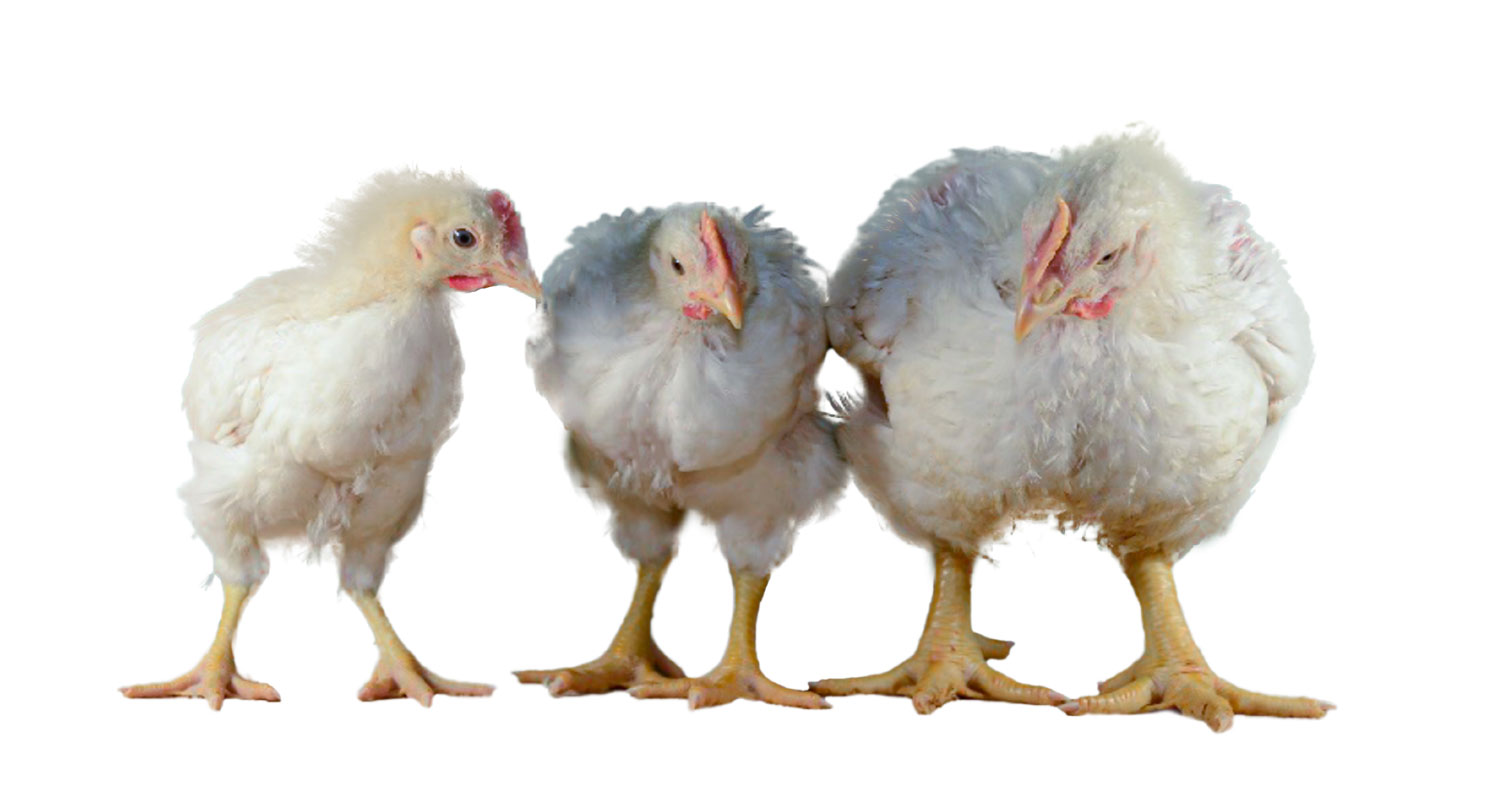
As part of the Integhof project (Integhof, 2019), scientists of the Institute of Animal Welfare and Animal Husbandry (ITT) of the Friedrich-Loeffler-Institut (FLI) in Celle, aimed to clarify and specify these requirements for dual-purpose male chickens “Lohmann Dual” (LD, Figure 1). Male chickens from two other breeds, “Ross 308” (Ross) and hybrid layer breed “Lohmann Brown” (LB) were used to compare the usage of the elevated structures on animal welfare. During the test period, male chickens of these three different breeds were kept in four compartments each (12 compartments in total). The results of three experiments will be reported below.
Methods, results and discussion
Experiment 1
Comparison of perches vs. elevated perforated platforms
In the first part of the study, perforated platforms (mesh size: 19 x 19 mm, bridge width: 10 mm, Big Dutchman International GmbH, Vechta, Germany) and perches (mushroom-shaped, width: 6 cm, LUBING Maschinenfabrik Ludwig Bening GmbH & Co. KG, Barnstorf, Germany) were installed at three different heights. They could be accessed via ramps (same material as platform, width: 30 cm; angle: 35°, Figure 2). 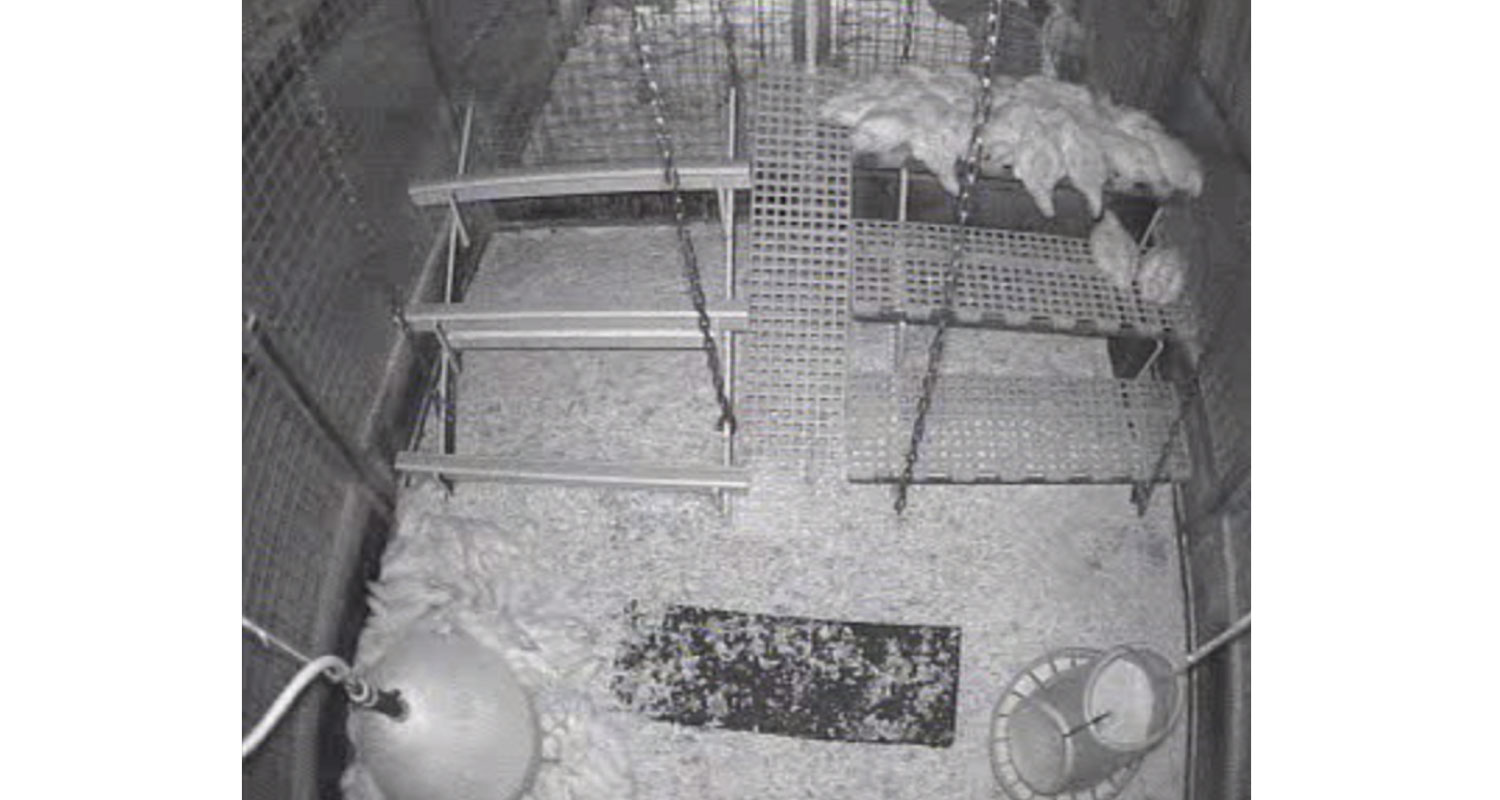
With regard to locomotor activity of individuals, improvements were found in LD and Ross as a result from the enrichment through the elevated structures. LD chickens from the enriched compartments showed a better walking ability compared to the birds from the non-enriched control groups. Plumage condition or foot health were not affected by the elevated structures. 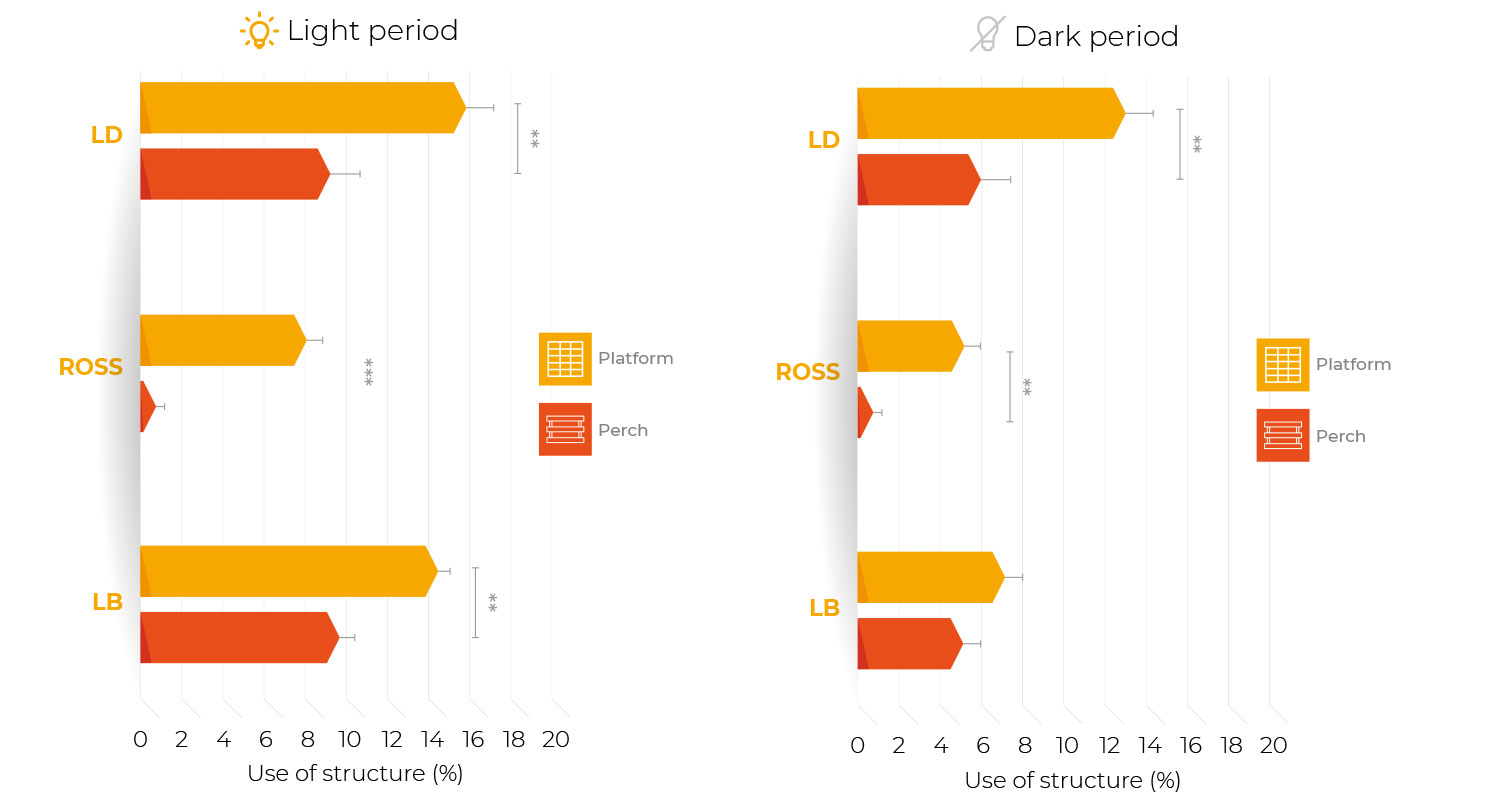
A total of 650 male chicks of the three different breeds were used. Fifty birds each were randomly allocated to 12 compartments (4 compartments per breed). The birds’ preference for the different elevated structures was determined for the later studies. All three strains showed an increasing use of the elevated structures (highest average use: LD ≈ 34%, Ross ≈ 14%, LB ≈ 34%). Only the Ross 308 broiler chickens showed a decreasing use of the elevated structures from the fourth to the fifth week of life during the light period. Throughout the study period, a clear preference for platforms over perches was observed for all three breeds (Figure 3).
Experiment 2
Comparison of different heights of the elevated structures
Because of the preference of perforated platforms, only these were offered as perching opportunities in the following studies. To test the effect of elevated structures on animal-related parameters such as locomotor activity, walking ability and plumage condition, half of the compartments (6 compartments – groups of 50 chicks each, two compartments per breed) were equipped with platforms (MIK International GmbH & Co. KG, Werl, Germany) at three different heights (10 cm, 30 cm, 50 cm). The frequency of use by the animals of the different levels was analysed. The slow growing breeds (LD and LB) preferred the highest levels while the fast growing breed (Ross) preferred the two lowest levels (Figure 4). With regard to locomotor activity of individuals, improvements were found in LD and Ross as a result from the enrichment through the elevated structures. LD chickens from the enriched compartments showed a better walking ability compared to the birds from the non-enriched control groups. Plumage condition or foot health were not affected by the elevated structures.
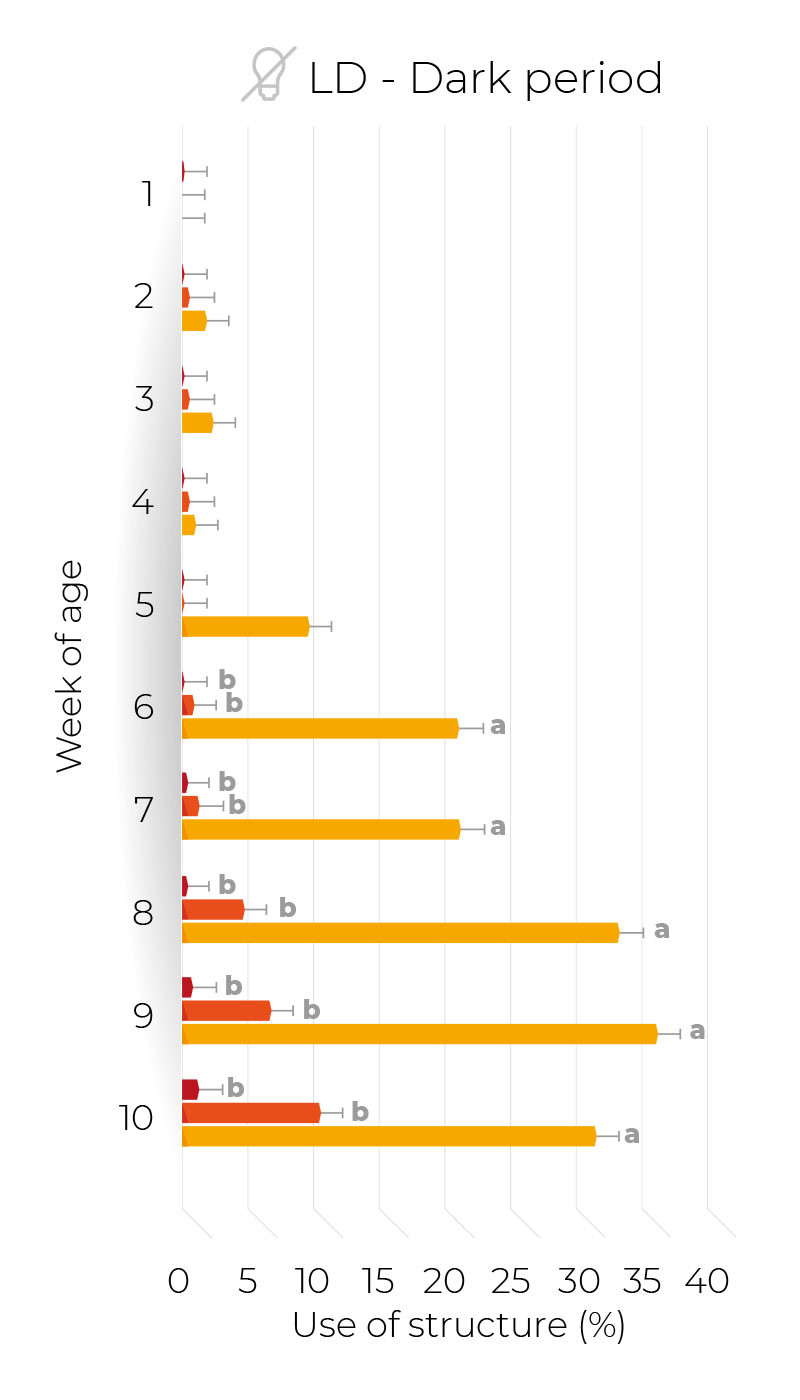
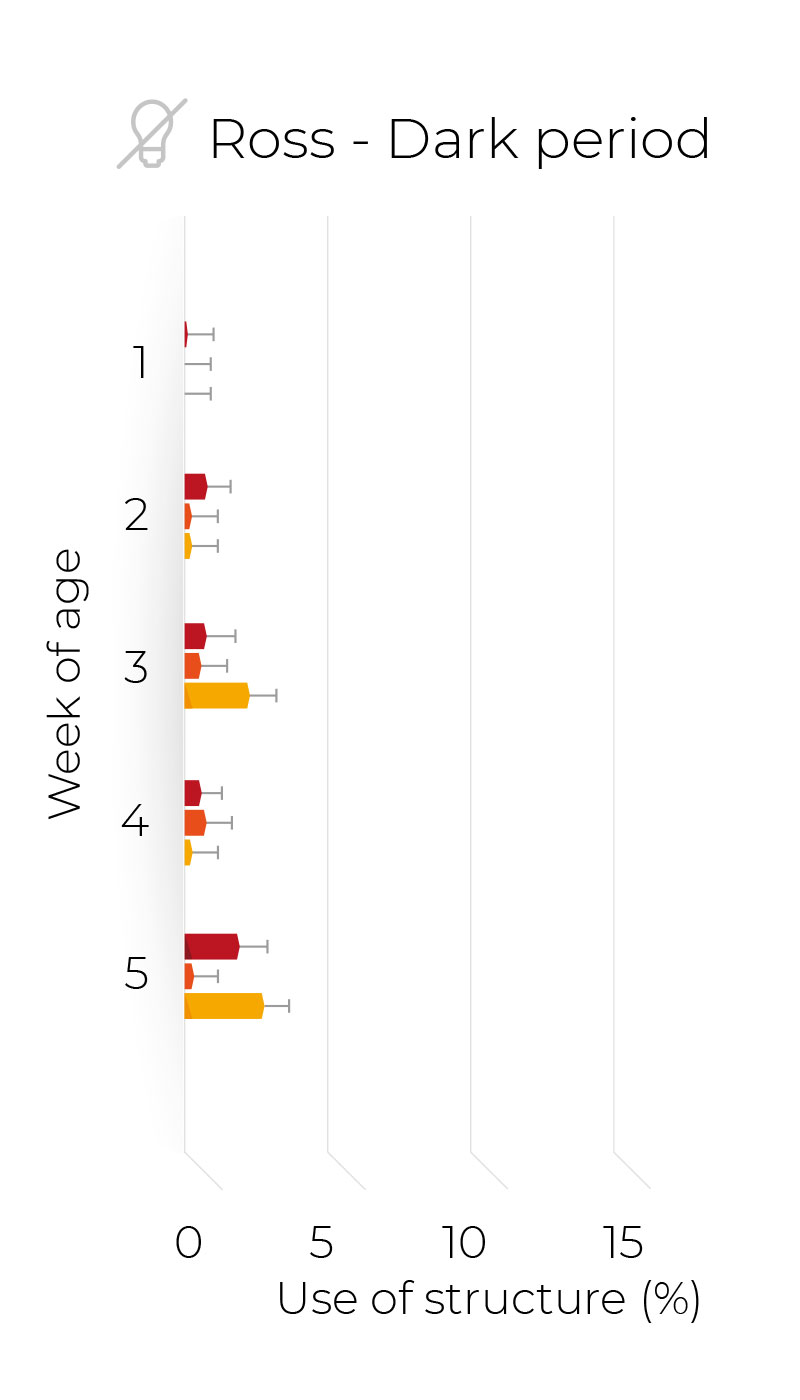
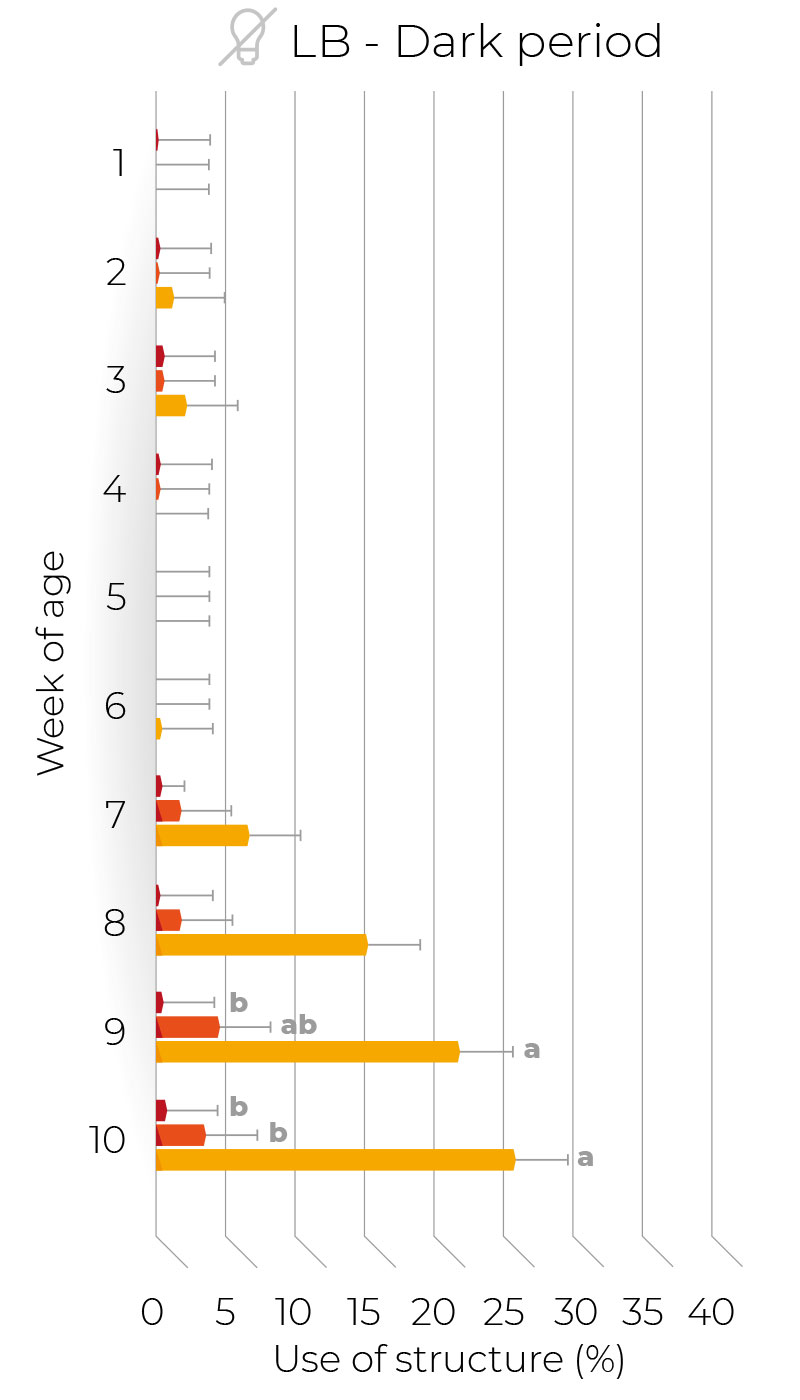
A – Lohmann Dual
B – Ross 308
C – Lohmann Brown
Differences between the structural shapes are marked by different letters (P < 0.05)
Experiment 3
Supply of space
In the third and final part of the study, six compartments per breed (three per breed), i.e. Ross and LD were kept. In half of the compartments the chickens were offered elevated platforms at a height of 50 cm with access via a widened ramp (from 30 cm in the previous experiments to 60 cm) and lower angel (from 35° in the previous experiments to 24°). In the other half compartments (6 compartments; three per breed, groups of 50 chicks each), no elevated platforms were offered. Hence the usable space was 20% smaller than in the compartments with raised platforms. Animal related parameters (e.g. walking ability, plumage condition, foot health) and planimetric data of the space covered by the animals on the elevated structure were measured. To date, only a descriptive evaluation of the use of elevated structure has been done. In comparison with the two previous experiments (Experiment 1: 14%; Experiment 2: 4%), Ross broilers showed an increase in use of the elevated platform of 18%. In LD 70% of the birds were observed on the elevated structures at the end of the growing period. The use of the total area differed between the two breeds due to the different body areas and the different utilisation of the elevated structures. In summary, it seems that fast growing birds require a smaller elevated area compared to slower growing breeds (Figure 5). Based on our results, we recommend an elevated platform for at least 20% of broilers like male Ross 308, while dual purpose males like Lohmann Dual should be given elevated platforms for at least 50% of the chicks. 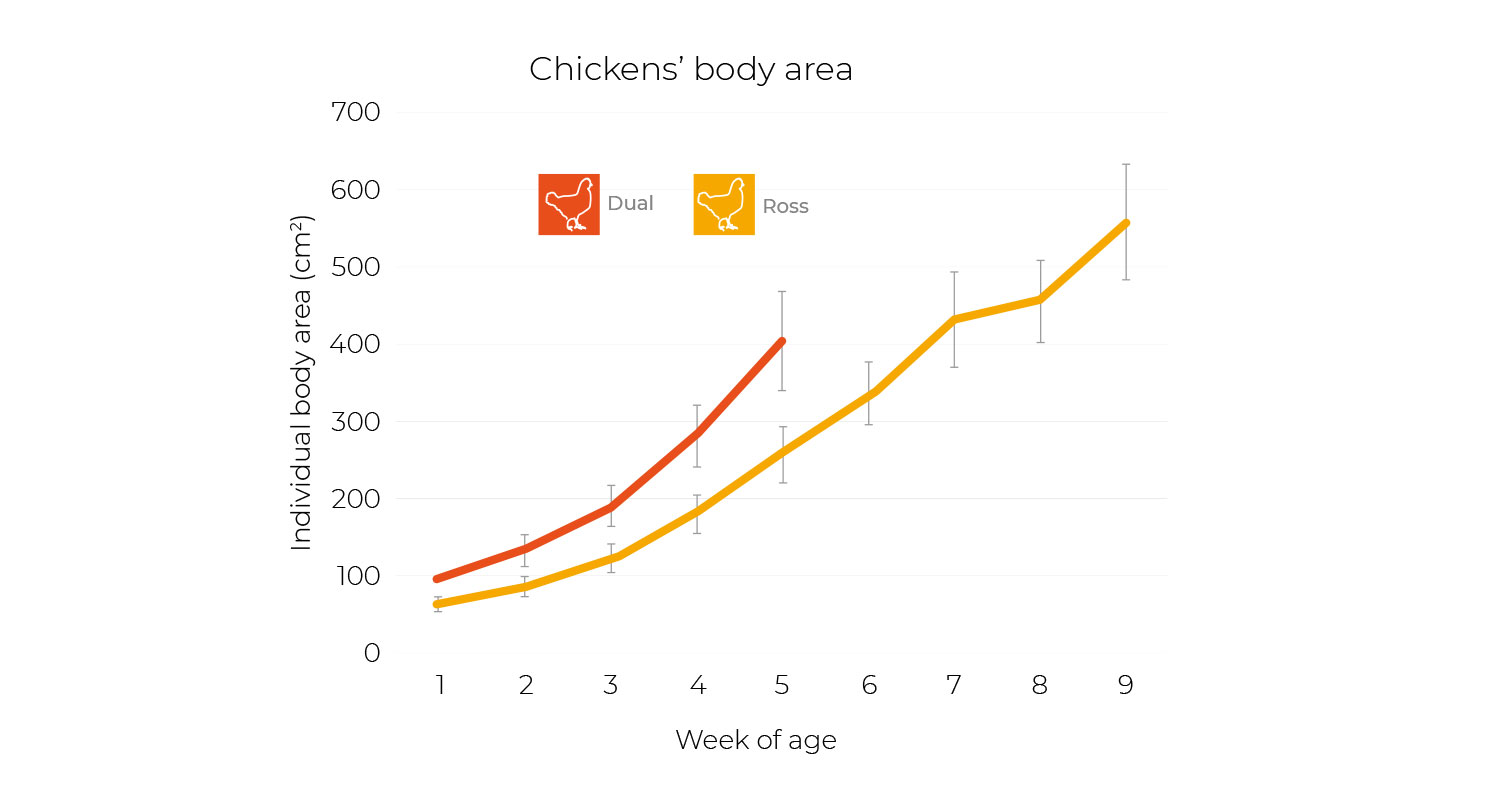
CONCLUSIONS
Taken together, it could be shown that broiler chickens differing in growth rate are highly motivated to use elevated platforms from the first week of life on. However, to use elevated platforms, the mesh size must be chosen correctly to minimise the risk of injury. Width and slope of the ramp also play an important role for an optimal use of the elevated structure, especially in fast growing breeds. Elevated structures can increase activity and improve walking ability. There was no increased dirtiness of the plumage of the birds below the structures. In addition, elevated platforms divide the available space into distinct activity and resting areas. A height of 50 cm of the elevated elements does not negatively affect the farmers’ animal control. Thus, elevated structures enhance the natural behaviour of walking and resting and thus, positively influence animal welfare.







